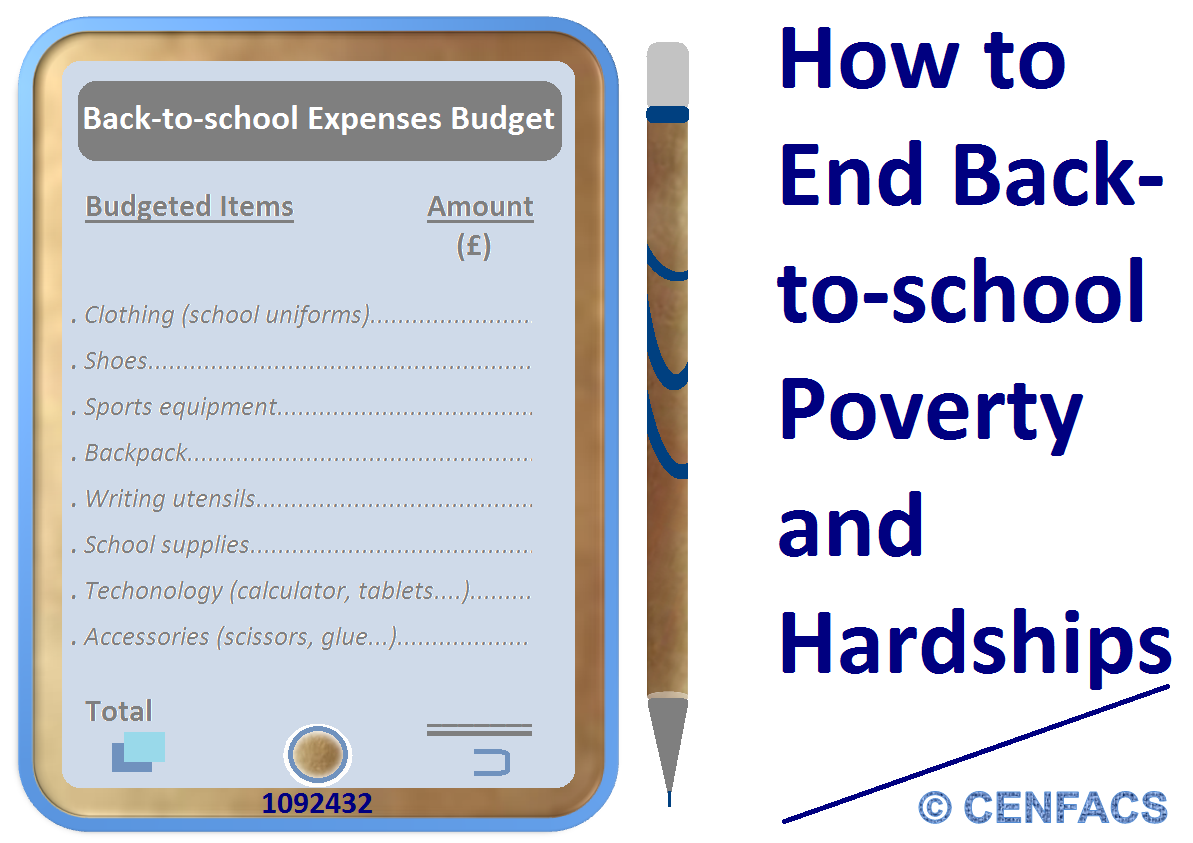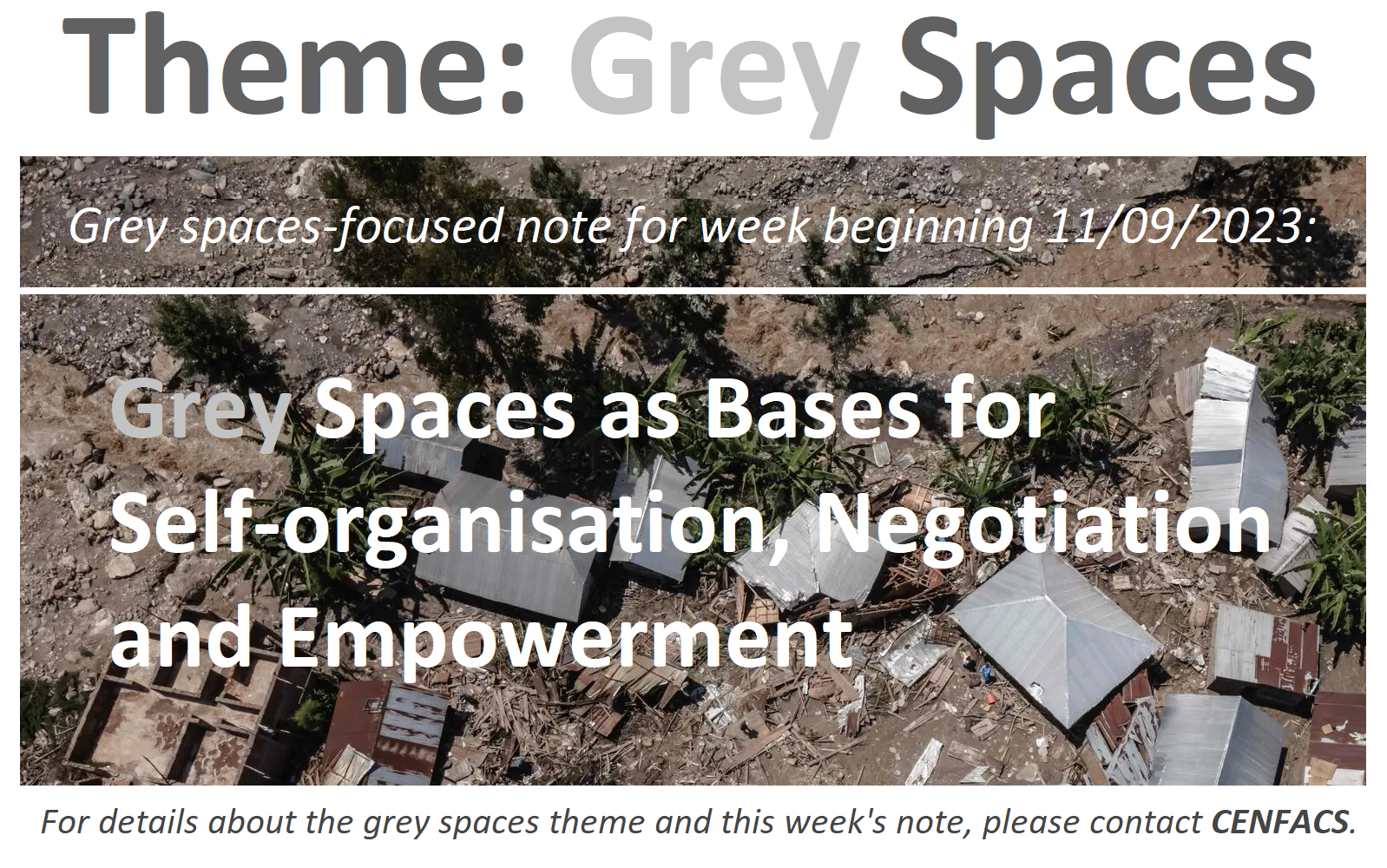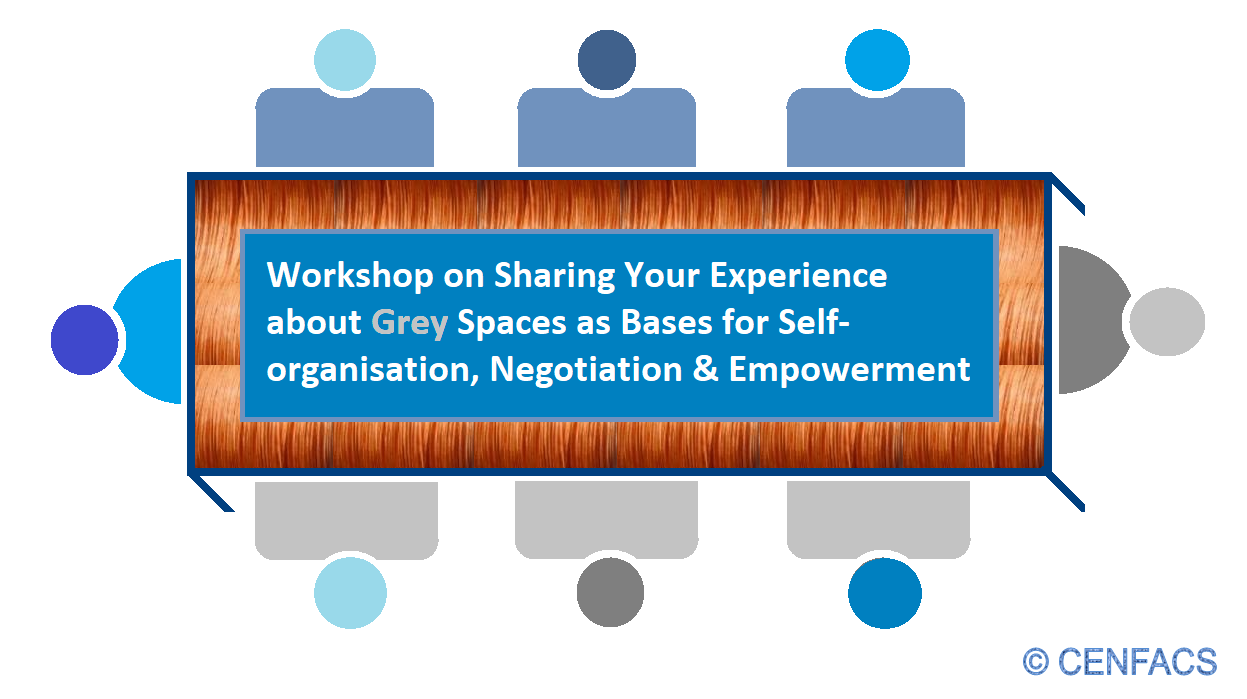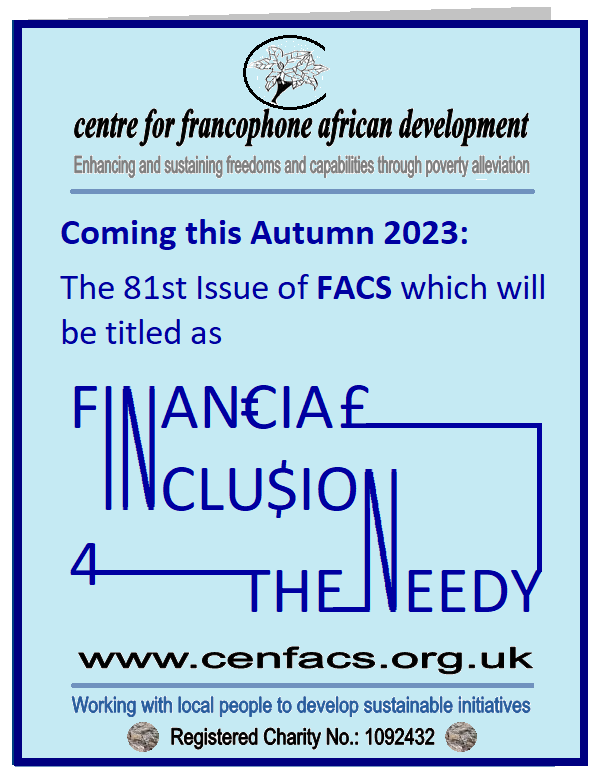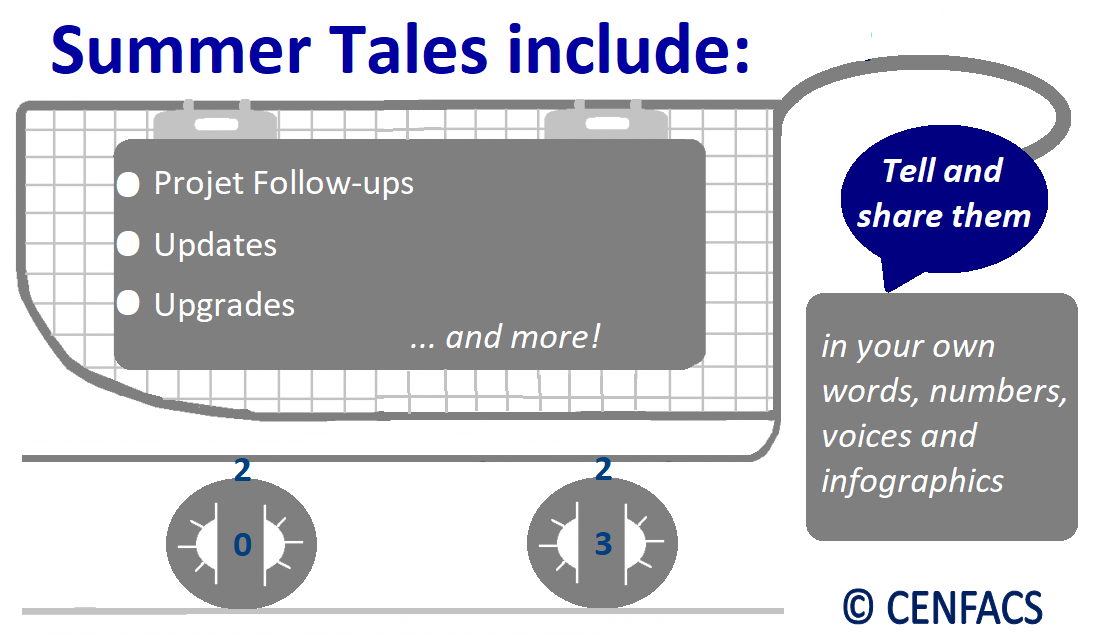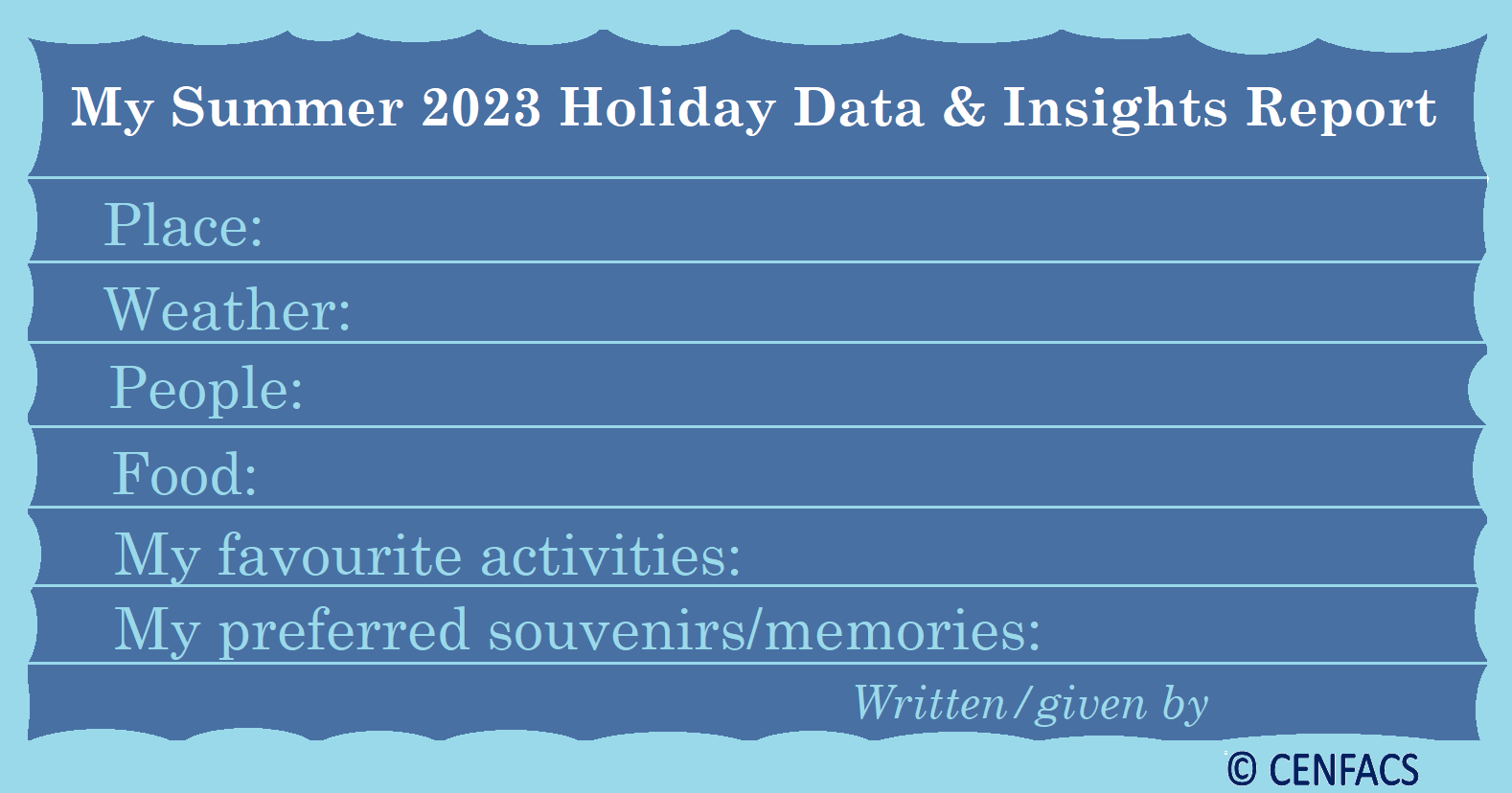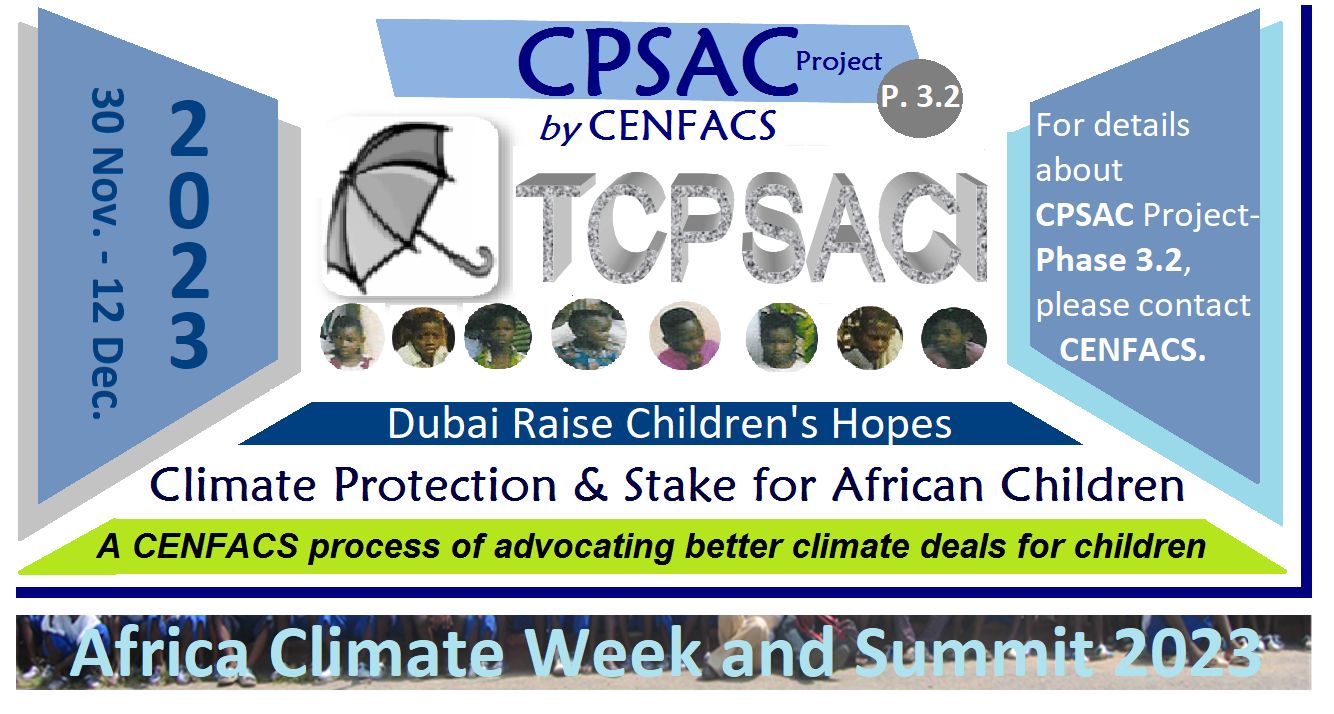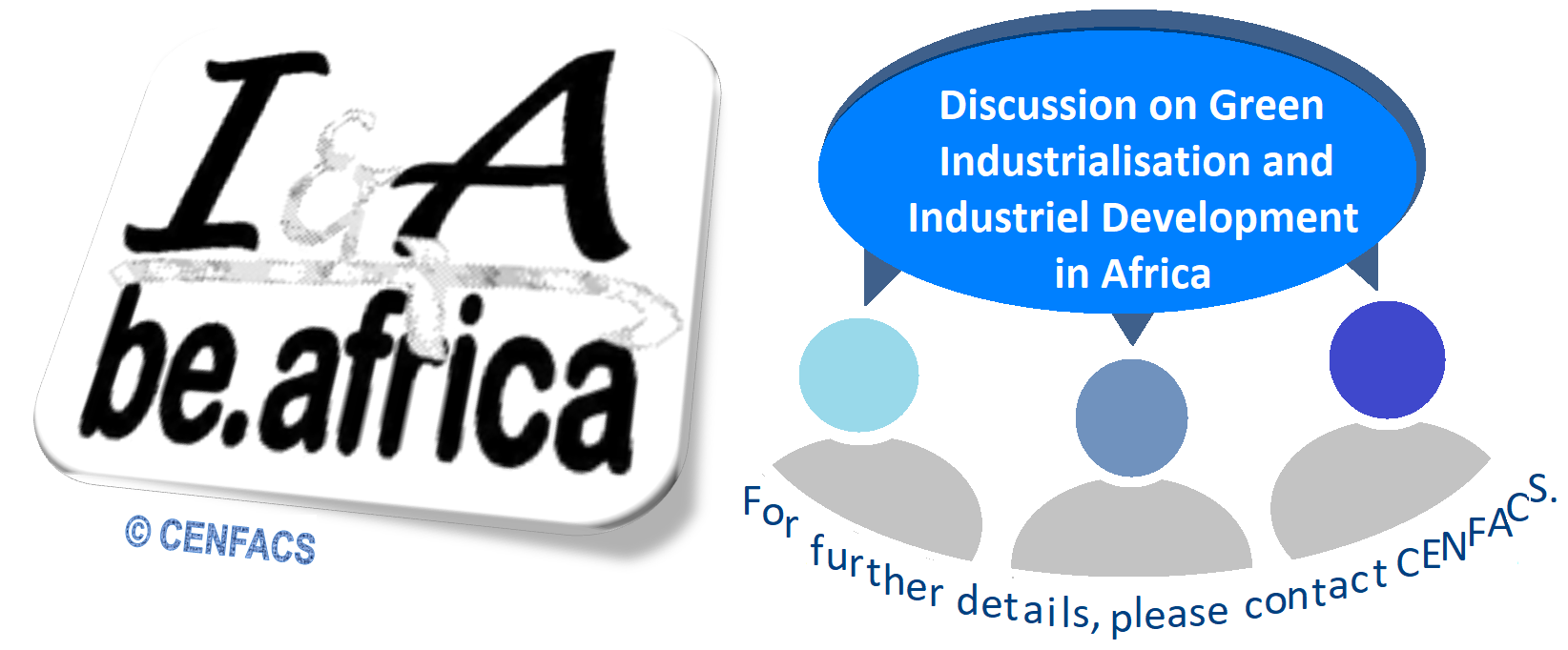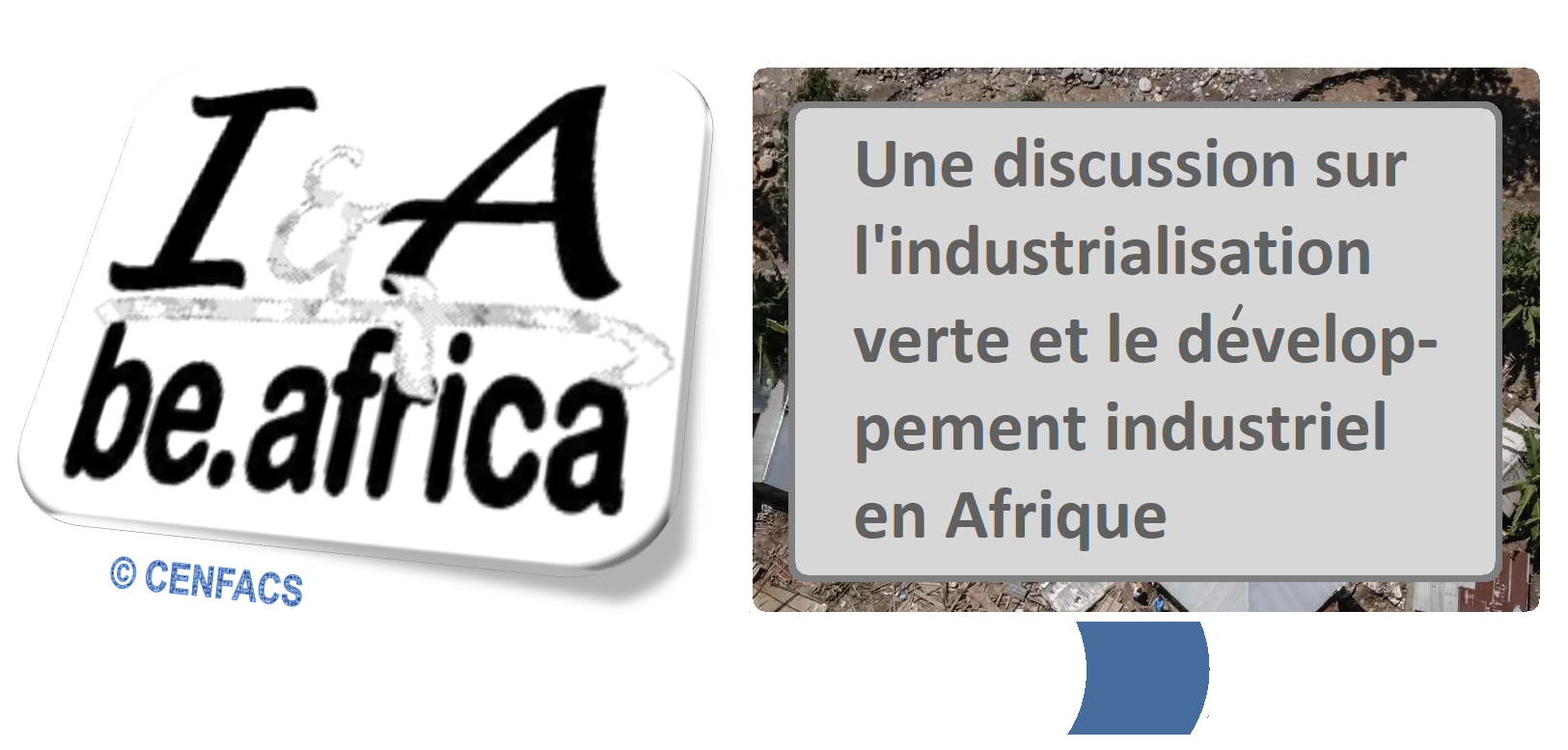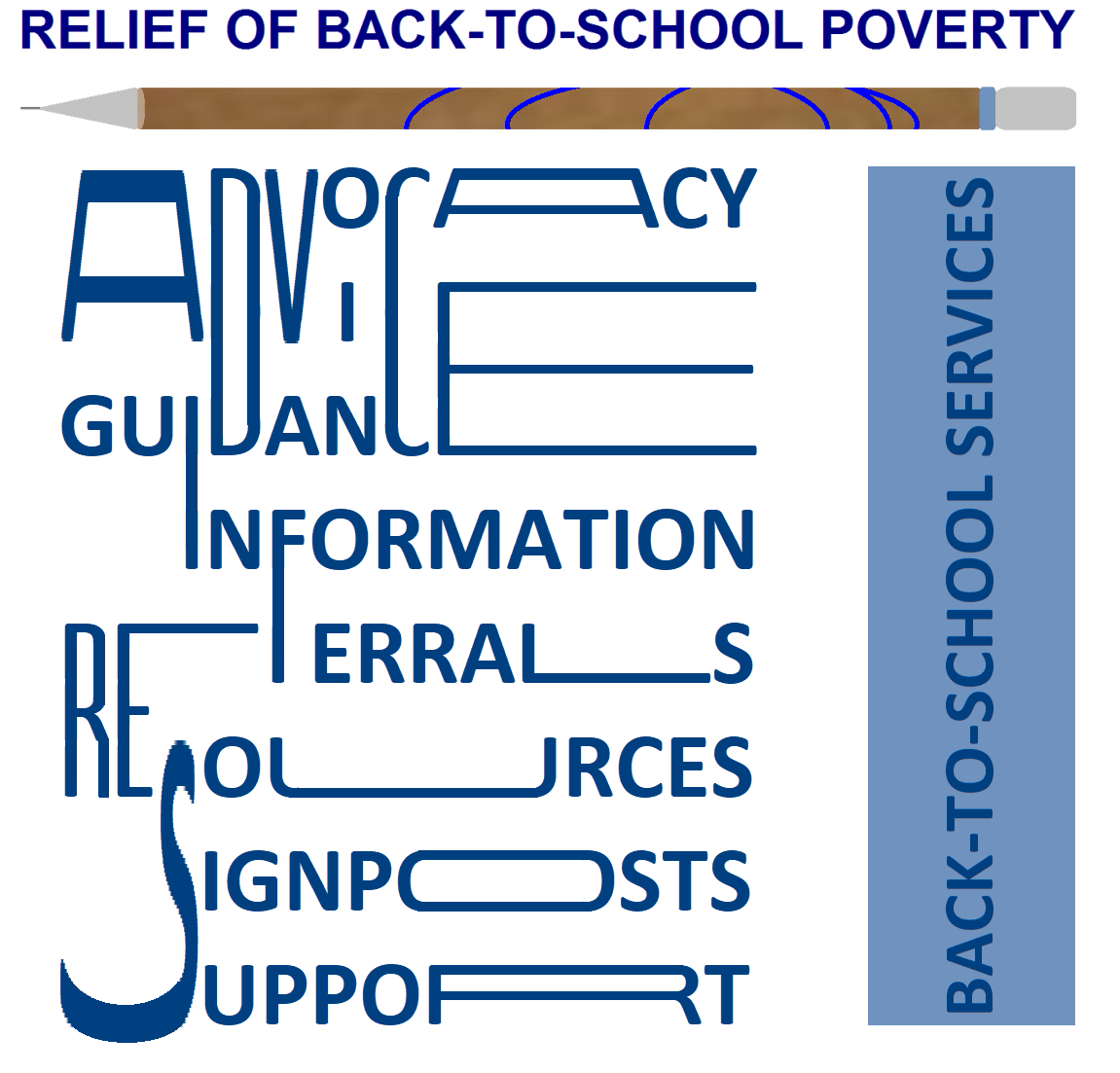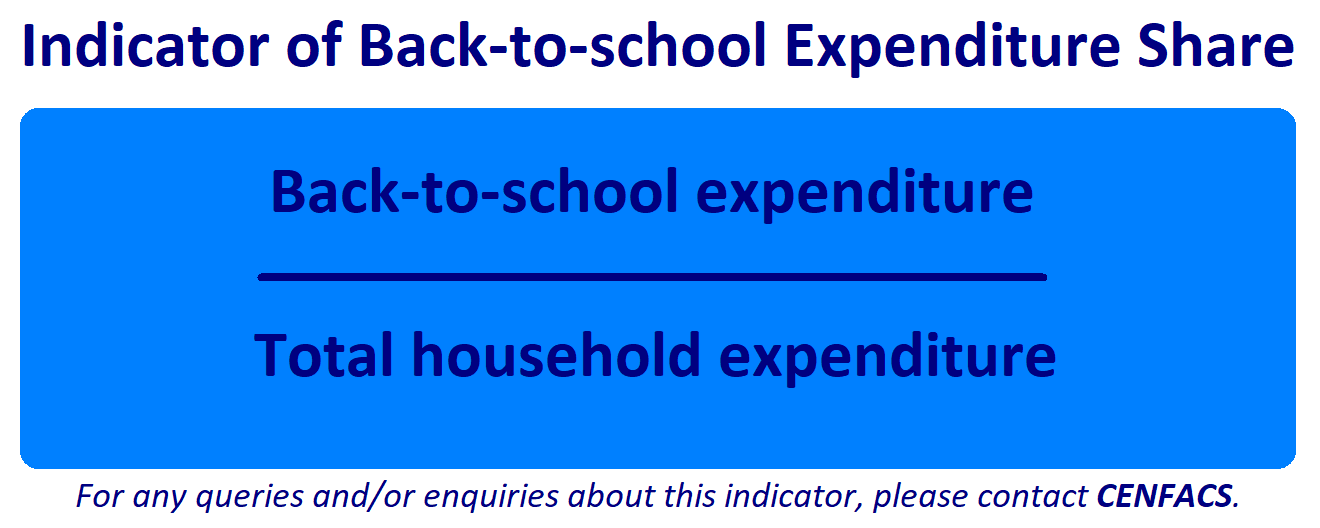Welcome to CENFACS’ Online Diary!
13 September 2023
Post No. 317
The Week’s Contents
• Reduction of Back-to-school Poverty in 2023
• Grey Spaces-focused Note for Week Beginning 11/09/2023: Grey Spaces as Bases for Self-organisation, Negotiation and Empowerment
• Coming in Autumn 2023: The 81st Issue of FACS Newsletter which will be Titled as Financial Inclusion for the Needy
… And much more!
Key Messages
• Reduction of Back-to-school Poverty in 2023
Back to school is a challenging time for many families and parents, especially for those on low-income brackets or those living in poverty. It is even controversial for many of them as they are trying to strike a delicate balance between building forward educational life for children and still dealing with the lingering effects of the coronavirus pandemic. It is deeply demanding for them during this painful time of the enduring cost-of-living crisis as the expenses of sending back their children to school are fiercely competing with soaring living costs.
Amongst these challenges, the greatest one for these families is back-to-school poverty. Back-to-school poverty is what we are trying to help reduce or eradicate within our back-to-relief programme this Autumn 2023. In our latest posts, we explained what we mean by back-to-school poverty. In this post, we shall contextualise it in the current difficult economic conditions of 2023 while finding the way of working with the community to reduce this type of poverty. We are tackling it through carrying on back-to-relief programme and services.
For more on back-to-school poverty and its reduction, please read under the Main Development section of this post.
• Grey Spaces-focused Note for Week Beginning 11/09/2023: Grey Spaces as Bases for Self-organisation, Negotiation and Empowerment
Grey Spaces can form the bases for self-organisation, negotiation and empowerment according to Oren Yiftachel (1). As Yiftachel puts it in his analysis of critical urban theories,
“Power relations are heavily skewed in favour of the state, developers or middle classes. Yet, the ‘invisible’ population of informal settlement is indeed important actors in shaping cities and regions” p.243
If those living in informal settlement like grey spaces are the main actors in shaping cities and regions, what can be done so that their power is acknowledged? In other words, what can be done to make grey spaces (and those in need populating grey spaces) to benefit from blue and green spaces in a safe, inclusive and accessible way; in doing so using these grey spaces to help reduce poverty and enhance sustainable development?
Self-organisation, negotiation and empowerment could be the way forward. But, what do we mean by self-organisation, negotiation and empowerment in the context of grey spaces and spacing.
• • Meanings of Self-organisation, Negotiation and Empowerment in the Context of Grey Spaces and Spacing
• • • Grey Space as a Basis for Self-organisation
The expression self-organisation can be looked in many ways. One way of defining it has been provided by T. R. Shultz (2) when explaining the connectionist models of development. According to Shultz,
“Self-organisation refers to spontaneous ordering tendencies in complex systems. Both brains and artificial neural networks, because of their complex dynamics, parallelism, and responsiveness to feedback are likely candidates for self-organisation. Indeed, neutral network models can be used to investigate self-organizing properties of the brain”.
In complex systems linked to grey spaces and spacing, informal settlers or the occupiers of grey spaces can give an orderly structure to their society and environment. They can orderly shape cities and regions.
• • • Grey Space as a Basis for Negotiation
Grey Space can be a principle on which an agreement can be based or made. In other words, one can engage Grey Space to negotiate.
For example, according Cindy Watson (3), one can use space to increase their influence. One can do it through proxemics. Cindy Watson defines proxemics as
“The branch of study that focuses on how humans view and interpret the use of space, particularly its direct impact on behaviour, communication, and social interactions”.
Cindy Watson adds that personal space zones include intimate space, social and consultative spaces and public space. People can use proxemics to understand and identify their zone to guarantee fluid negotiations.
• • • Grey Space as a Basis for Empowerment
Grey Space can be an idea for giving the power to people. To explain this, we are going to refer to the notion of empowerment used in co-design. This notion is conceptualised by Theodore Zamenopoulos et al. (4) who explain that those engaged in co-design in empowerment may come with the development of different capacities. From these capacities, they differentiate four types of power: ‘power over’, ‘power to’, ‘power with’, and ‘power within’.
By referring to the definition of empowerment given by Zamenopoulos et al., it is possible for the powerless of grey spaces to develop capacities to bring to the fore their own issues, to make sense of their matters of concern, to connect and act in concert with others, and to unlock and transform their own knowledge and resources.
So, it is feasible to use the above-mentioned three bases at the same time to make grey spaces (and those in need populating grey spaces) to benefit from blue and green spaces in a safe, inclusive and accessible way.
• • Making Grey Spaces (and Those in Need Populating Grey Spaces) to Benefit from Blue and Green Spaces in a Safe, Inclusive and Accessible Way
It is possible to use the three bases of Grey Space (as Self-organisation, Negotiation and Empowerment) to make Grey Spaces and those in need forming Grey Spaces to benefit from blue and green spaces in a safe, inclusive and accessible way. This makeup in urban and densely populated areas can be done by
σ mainstreaming the conservation and sustainable use of biodiversity
σ ensuring biodiversity-inclusive urban planning
σ enhancing native biodiversity, ecological connectivity and integrity
σ improving human health and well-being and connection to nature and contributing to inclusive and sustainable urbanization and the provision of ecosystem functions and services.
There is more to argue and prove about how Grey Spaces can be the Bases for Self-organisation, Negotiation and Empowerment. However, we are particularly interested in the experience that our members had with Grey Spaces in terms of bases for self-organisation, negotiation and empowerment. This note and the workshop (we have planned on this matter) will help us to work together with the community on ways of finding the bases for self-organisation, negotiation and empowerment.
From the experiences shared by our members, we shall use this note to help us identify areas of unmet needs within our community and generate projects or activities to help satisfy those unmet needs.
For those of our members who would like to work with us or participate to the workshop on how they can self-organise, negotiate and empower themselves, they are welcome to work with us.
For those members whose Grey Spaces are part of their life and would like to share their experience of them in terms of benefits from blue and green spaces in a safe, inclusive and accessible way; they are also invited to share it with us.
For those who would like to further discuss with us any other matters relating to Grey Spaces, they should not hesitate to contact CENFACS.
• Coming in Autumn 2023: The 81st Issue of FACS Newsletter which will be Titled as Financial Inclusion for the Needy
The 81st Issue of FACS will stocktake most of matters discussed in our last July Festival of Thoughts and Actions, which focussed on Financial Inclusion to Improve the Quality of Poor People’s Lives. The 81st Issue of FACS will go further in exploring ways of working with the communities here in the UK and in Africa to enhance financial inclusion for them.
The 81st Issue of FACS will approach financial access and inclusion from the “user-side” view, from the removal of demand-side constraints on the financially excluded. From this point of view, demand from unbanked individuals could be created to realise financial access and inclusion. The 81st Issue of FACS will also be an experimental approach to financial poverty that will draw inspiration from the financially excluded and needy people, and that will use deliberative practice or methodology.
The 81st Issue of FACS will acknowledge the progress made to financially include many of the poor people who work with our Africa-based Organisations from exclusively cash-based transactions to formal financial services by using a mobile phone or other digital technologies to access these services. However, it will also recognize that there are still people who are finding it difficult to be part of this financial world. These financially excluded or underserved poor people, of which some of them make our community, could be struggling to improve the quality of their lives.
Amongst these strugglers, there are examples of poor women in rural areas of Africa who are lacking access to financial services. There are as well those highly indebted (because of the enduring cost-of-living crisis or the effects of other crises like the lingering effects of the coronavirus) who have been excluded from the financial world, apart from worrying how they could get back to this world.
They could be struggling because financial inclusion is more than just getting people, especially the poor ones, to move to financial digital products and services offered on the market. But, what is financial inclusion?
There are many definitions of financial inclusion. The 81st Issue of FACS will focus on the definitions that are related to those living in poverty or experiencing financial hardships. One of these definitions come from Peterson K. Ozili (5) who explains that
“Financial inclusion is the provision of, and access to, financial services to all members of population particularly the poor and the other excluded members of the population” (p. 3).
Another definition within the financial inclusion literature comes from the ‘worldbank.org’ (6) which says that
“Financial inclusion means that individuals and businesses have access to useful and affordable financial products and services that meet their needs – transactions, payments, savings, credit and insurance – delivered in a responsible and sustainable way”.
The same ‘worldbank.org’ explains that
“Digital financial inclusion involves the deployment of the cost-saving digital means to reach currently financially excluded and underserved populations with a range of formal financial services suited to their needs that are responsibly delivered at a cost affordable to customers and sustainable for providers”.
Financial inclusion definitions come with theories to support them. The 81st Issue of FACS will use the vulnerable group theory of financial inclusion. What this theory is about. According to Peterson K. Ozili (op. cit.),
“The vulnerable group theory of financial inclusion argues that financial inclusion programme in a country should be targeted to the vulnerable members of society who suffer the most from economic hardship and crisis, such as poor people, young people, women, and elderly people. The theory argues that vulnerable people are often the most affected by financial crises and economic recession, therefore, it makes sense to bring these vulnerable people into the formal financial sector. One way to achieve this is through government-to-person social cash transfers into the formal account of vulnerable people” (p. 7)
In this respect, the 81st Issue of FACS will be a gripping story of Africa-based Sister Organisations that are working with their locals in their journey to financial inclusion, to find opportunities to reduce financial poverty. They are as well running projects to help the polycrises-impacted people to be financially re-included in the agenda for financial inclusion for all. They are further undertaking initiatives conducive to close gender gaps in financial inclusion and gender digital divide. They are finally joining forces with their users so that the latter can access financial inclusion programmes that are on offer where they live.
The 81st Issue of FACS will not only deal with one generation of financial excluded. Instead, it will cater for all generations. Amongst these generations, there is the older one. The 81st Issue of FACS will address the gaps and challenges that prevent Africa’s older generation from accessing cost-saving means linked to financial services and products.
Far from being a theoretical story or account of the financial excluded people, the 81st Issue of FACS will provide some clues for them to navigate their way out of financial exclusion. Full of fresh ideas about Africa-based Sister Organisations’ way of working with the financially excluded locals, the 81st Issue of FACS will show that financial inclusion can change the needy persons’ life.
The 81st Issue of FACS will not only explain the financial inclusion problems faced by these persons and the members of our community, but it will make recommendations for action. In this respect, it will give the readers and our audiences a good understanding of the financial inclusion challenges experienced by these persons and our members, as well as the efforts made to mitigate these challenges. In doing so, it will dispel the myth of hopelessness for the financial excluded, while providing options and opportunities for them.
To get inside scoop on the Issue No. 81 or to reserve a copy before its publication, please contact CENFACS.
Extra Messages
• Summer 2023 Reporting in Your Own Words, Numbers, Voices and Information Graphics
• Taking Climate Protection and Stake for African Children at the Implementation with Installation Sub-phase (Phase 3.2)
• CENFACS’ be.Africa Forum e-discusses Green Industrialisation and Industrial Development in Africa with a Focus on Making Africa a Place where Its Raw Materials are Processed, Not Just Exported
• Summer 2023 Reporting in Your Own Words, Numbers, Voices and Information Graphics
Last week, we started to unlock or unpack our Summer holiday data and to prepare to tell our Summer holiday stories. This week, we are going further in putting into practice our unlocked or unpacked data in support of Summer experiences or stories.
• • Summer 2023 Experiences Reporting as an Additional Opportunity
From this week until Wednesday the 21st of September 2023, we are simply asking to those who can, to share with us and others their Summer experiences; experiences about what they did during the Summer break and think that it is useful for sharing.
The 2023 Summer Experiences Reporting activity is a further opportunity for reporting, sharing, learning and development for those who have not yet informed us about the outcomes of projects; projects pending for reporting, personal experiences to be shared, lessons to learn and development trends to spot.
• • Sharing Development Experiences, Stories, Tales and Reports about Summer 2023
As we are nearing the end of Summer 2023, we would like our users. members and supporters as well as those who sympathise with CENFACS’ cause to share with us and others their experiences, stories and reports about the initiatives mentioned below.
a) Run, Play and Vote projects (Triple Value Initiatives 2023)
You can feedback the outcomes or Action-Results of your Run, Play and Vote projects.
b) Volunteering and Creation Stories
You can also share your volunteering stories with us and others if you did volunteer during the Summer break.
c) Summer Programmes: Happiness, Healthiness and Appeal Projects
You may prefer to report on your use of Happiness and Healthiness projects and your response to our Humanitarian Relief Appeal projects.
d) August 2023 Trending Activities
You can as well report on your experience of following the direction of poverty reduction through Marine and Coastal Ecosystem Services.
e) Influence Year’s Activities/Tasks
As we are in CENFACS’ Influence Year, we would be more than happier to hear any uplifting stories related to this year’s dedication.
f) Journal of Happiness and Healthiness
You can share the contents of your happiness and healthiness journal relating to happy, healthy and trustful Summer 2023; as well as help build a better Summer holiday experience.
g) Other Experiences and Memorable Stories Reporting
You can feedback on any moving experience or transformative story you have had during Summer 2023.
You can report your experience via e-mail, over phone and through social media networks or channels of communication (e.g., Twitter).
Thank you for supporting us with your Summer 2023 experience, story and report In Your Own Words, Numbers, Voices and Information Graphics.
• Taking Climate Protection and Stake for African Children at the Implementation with Installation Sub-phase (Phase 3.2)
Working on what was discussed during Africa Climate Week and Summit 2023
Under CENFACS’ CPSAC (Climate Protection and Stake for African Children) and its sub-phase 3.2., we are continuing to make the case for our demand to give a climate stake to children.
We are as well carrying out our preparation for follow-up of the 28th session of the Conference of the Parties (COP 28) to the UNFCCC (United Nations Framework Convention on Climate Change), which will be convened in Dubai (United Arab Emirates) from 30 November to 12 December 2023 (7). This engagement or follow up will contribute to TCPSACI.
The slogan for this 2023 follow-up is: Dubai Raise Children’s Ambitions and Hopes.
As part of this preparation, we followed Africa Climate Week and Summit 2023 (8) which was held from 04 to 8 September in Nairobi (Kenya). At this platform, policymakers, practitioners, businesses and civil society representatives discussed regional climate action solutions and forged regional partnerships.
We are considering the key points of their discussions, which include clean energy, carbon taxes, finance reforms, green industrialisation, climate impacts, the implementation of loss and damage fund, etc. We are reflecting on how they can fit into CENFACS’ CPSAC and its sub-phase 3.2. We are as well looking at how we can take forward what was discussed during Africa Climate Week 2023.
To support and or enquire about CENFACS’ CPSAC and its sub-phase 3.2, please contact CENFACS.
• CENFACS’ be.Africa Forum e-discusses Green Industrialisation and Industrial Development in Africa with a Focus on Making Africa a Place Where Its Raw Materials are Processed, Not Just Exported
It is a matter of fact that there are countries in Africa that are spoiled with raw materials and natural resources. However, for historical reasons the region exports most of its raw materials instead of processing them in Africa. As the region is looking for its way to keep pace with green industrialisation and industrial development, CENFACS’ be.Africa Forum is debating the issue of Making Africa a Place Where Its Raw Materials are Processed, Not Just Exported.
It is a discussion on the process of building up Africa’s capacity to process raw materials and to manufacture goods for consumption or further production in a sustainable way. It is also a debate on growing industries by using new and better technologies that increase outputs in Africa.
The Forum’s debate goes further in exploring the opportunities and possibilities of poverty reduction resulting from home processing of raw materials. In other words, it looks at what could be the impact of home processing of raw materials on poverty reduction at home. However, the discussion is not about import substitution strategy which is another debate.
Those who may be interested in this discussion can join in and or contribute by contacting CENFACS’ be.Africa, which is a forum for discussion on matters and themes of poverty reduction and sustainable development in Africa and which acts on behalf of its members in making proposals or ideas for actions for a better Africa.
To communicate with CENFACS regarding this discussion, please use our usual contact details on this website.
Message in French (Message en français)
• Le Forum ‘Une Afrique Meilleure’ de CENFACS discute en ligne de l’industrialisation verte et du développement industriel en Afrique en mettant l’accent sur le sous-thème suivant:
Faire de l’Afrique un lieu où ses matières premières sont transformées, pas seulement exportées
C’est un fait qu’il y a des pays en Afrique qui sont gâtés avec des matières premières et des ressources naturelles. Cependant, pour des raisons historiques, la région exporte la plupart de ses matières premières au lieu de les transformer en Afrique. Alors que la région cherche un moyen de suivre le rythme de l’industrialisation verte et du développement industriel, le Forum ‘Une Afrique Meilleure’ de CENFACS débat de la question de faire de l’Afrique un lieu où ses matières premières sont transformées, pas seulement exportées.
Il s’agit d’une discussion sur le processus de renforcement de la capacité de l’Afrique à transformer les matières premières et à fabriquer des biens destinés à la consommation ou à la production ultérieure de manière durable. C’est aussi un débat sur la croissance des industries en utilisant des technologies nouvelles et meilleures qui augmentent la production et la productivité en Afrique.
Le débat du Forum va plus loin dans l’exploration des opportunités et des possibilités de réduction de la pauvreté résultant de la transformation à domicile des matières premières. En d’autres termes, il examine quel pourrait être l’impact de la transformation à domicile des matières premières sur la réduction de la pauvreté à domicile. Cependant, la discussion ne porte pas sur la stratégie de substitution des importations, ce qui est un autre débat.
Ceux ou celles qui pourraient être intéressé(e)s par cette discussion peuvent se joindre à et / ou contribuer en contactant le Forum ‘Une Afrique Meilleure’ de CENFACS, qui est un forum de discussion sur les questions et les thèmes de la réduction de la pauvreté et du développement durable en Afrique et qui agit au nom de ses membres en faisant des propositions ou des idées d’actions pour une Afrique meilleure.
Pour communiquer avec le CENFACS au sujet de cette discussion, veuillez utiliser nos coordonnées habituelles sur ce site.
Main Development
• Reduction of Back-to-school Poverty in 2023
In order to approach back-to-school poverty, the following items will be considered:
∝ Back-to-school Challenge
∝ Back-to-school Poverty
∝ Back-to-school Disrupted by the Enduring Cost-of-living Crisis
∝ Back-to-school Support
∝ Back-to-school Budget Adjusted for Inflation
∝ Extra Investment Linked to Back-to-school Preparation and Children’s Education
∝ Back to School is NOT a One-day Event
∝ Go Net Zero in Your Back-to-school Approach.
Let us summarise each of these elements explaining our way of approaching back-to-school poverty.
• • Back-to-school Time as a Challenging Period for a Basic Human Right and a Deserving Cause
For some, back to school/college is a normal time to prepare and do normal purchase whether it is for school uniforms or books or even any other school items. However, for those who are struggling to make ends meet, back-to-school time could be a very challenging moment as they may not always have enough financial resources or support to cope with the requirements of the start of the new school year. Yet, education is a basic human right and a deserving need for children and all society.
Back to school/college for the poor is characterised by the following:
∝ The struggle to afford the educational costs linked to school/college
∝ The inability to meet basic life-sustaining needs (including of education, food, fuel, shelter, skills development, clothes, bedding, etc.)
∝ Deprivation of cleaning and disinfecting household items
∝ The financial inability for children to access after school clubs
∝ The lack of resources to deal with hygiene poverty
∝ The lack of or poor access to internet broadband
Etc.
This year’s back to school/college is still painful as the cost-of-living crisis is posing problems to many low-income or poor families and households. Already, many of them have been struggling to come out of the legacies of the coronavirus. Now, this struggle has increased with the enduring cost-of-living crisis, which still is complicating and disrupting the back-to-school organisation as well as the start of academic year for most of these families and households.
• • Back to School Disrupted by the Enduring Cost-of-living Crisis
The rise in the prices of food, energy, water, rent and other basic necessities of life can only bring a lot of pain for those who are already struggling to make ends meet. Back-to-school preparation and delivery are not exempted by this pain.
Back to school has been disrupted in many aspects and respects because educational life is linked to the satisfaction of other life-sustaining needs. This is because without food, energy, water, home, hygiene and health; all operation of back to school and even afterwards can be jeopardised.
If there is any help to cover some of the costs of back to school, it would be great if this help could make up the difference linked to the cost-of-living crisis. Otherwise, the needs relating to back to school would not be met. Failing to meet those needs could even be worse where there is a situation of back-to-school poverty.
• • Back-to-school Poverty
As we defined it in our last post (9), Back-to-school poverty is the inability to afford the educational requirements of the start of the new school year. But how do we measure it?
• • • Indicators of back-to-school poverty
The following cases can indicate that there could be a situation of back-to-school poverty and hardships:
∝ If parents or carers of children going back to school do not have enough money or support to cover the expenses linked to back to school
∝ If households spend more than a certain percentage (let say 40 to 50 percent) of their incomes in back-to-school preparation and delivery compared to other items in their budget
∝ If households borrow money to cover expenses relating to back-to-school preparation and delivery
∝ If back-to-school expenses fiercely competing against other living expenses in household budgets.
Not having enough money, spending more in back-to-school expenses compared to other household expenses and borrowing money to prepare back to school for children are all indicators of back-to-school poverty and hardships. When this type of poverty or hardship is intense and deep, it is even a serious problem. There could be more indicators than the above mentioned.
These indicators (like household expenditure on back-to-school preparations), if they are not good, can express the inability for parents and carers to meet the basic life-sustaining needs of education for their children in terms of purchasing school items (such as uniforms, clothes, books, electronics, etc.) and providing the basic infrastructures and necessities (whether it is at home or outside) to support the education of their children.
This incapacity can include other expenses that compete against or with educational materials; expenses that are school fees, living expenses to start a new school year, transport cost to travel to schools, food, a place to study at home, family relocation, adequate meal to study, a proper bed to sleep well, basic healthcare and hygiene at home, etc.
• • • Back to school for families and parents living in poverty
Families and parents living in poverty or on a tight family budget may not be able to afford these additional expenses budget. They are forced to currently deal with two types of poverty: back-to-school poverty and hygiene poverty.
The first type of poverty is related to the start of the new school year whereas the second is caused by the lack of hygiene.
Since we have already considered back-to-school poverty, we are going to only explain hygiene poverty.
• • • • Explaining hygiene poverty
To elucidate hygiene poverty, we are referring to what ‘povertyimpactnetwork.com’ (10) argues about that which is:
“Hygiene poverty is an inability to afford everyday hygiene products, such as shampoo, toilet paper, grooming products, dish soap, etc.”
On the website ‘povertyimpactnetwork.com’, it is further stated that
“Children who grow up in hygiene poverty households can struggle to end the cycle of poverty through successful employment after starting life on rocky ground”.
There could be support for them for some of the vital educational and hygiene needs to be met; just as there is no support for others.
• • Back-to-school Support at CENFACS with Back-to-school Clinics
Any type of poverty needs response. As far as CENFACS is concerned, we can support those falling into back-to-school poverty trap by providing advice through our advisory package under the back-to-relief programme. This package includes activities such as advice, advocacy, information, guidance, signposting, etc.
During the coronavirus pandemic, we enhanced health and safety aspects in this programme. Last year, we included in this programme the advice service for the impacted of the cost-of-living crisis. This year, we have set up Back-to-school Clinics.
Although our support to fight both back-to-school poverty and the cost-of-living poverty is small and limited, it can nevertheless help beneficiaries to get something and keep moving towards of a BIG relief.
Our Back-to-school Support or Clinics can be accessed as follows:
√ Virtually and in-person on a one-to-one basis or as a group
√ Over phone
√ Via e-mail
√ and by filling the contact form on our website saying the type of support you need.
Where beneficiaries have access to video technology, we can arrange a meeting via a video scream.
Where in-person meeting with beneficiaries is the preferred or unavoidable option, an appointment needs to be made for this meeting to happen. Also, extra precautionary health and safety measures will be taken before the advice can happen.
To seek advice or support regarding your back-to-school poverty or hardships, please contact CENFACS.
• • Back-to-school Budget Adjusted for Inflation
The 2023/2024 Back-to-school Budget would include the cost-of-living crisis for many parents and families as they have to cost and integrate the rise in the costs of living into the educational budget of their children. They are forced to do so since many of them have been told that inflation will continue to rise until it reaches a peak; then it will start to fall. It is also a budget of building forward from the lingering effects of the coronavirus.
For those parents and families who are struggling to write their back-to-school budget, we can help them to do that. We can as well advise on some of the aspects related to the back-to-school budget preparation and delivery. Furthermore, we can lead them to specific advice services related to back-to-school matters.
For those parents and families who are executing their back-to-school budget, but they are struggling in this execution; we can review their budget downwards or upwards depending on the case.
For those parents and families who have already executed their back-to-school budget, but they need monitoring and evaluation for learning and development purpose; we can as well help.
To seek advice or support regarding your back-to-school budget, please contact CENFACS.
• • Extra Investment Linked to Back-to-school Preparation and Children’s Education
There are some levels of investment that parents and families may have to do to keep the education of their children to an internationally agreed standard. They may have to proceed with the following initiatives:
∝ Invest in distance learning technologies (such as tablets, laptops, mobile phones, etc.)
∝ Improve their access to internet and broadband supplies
∝ Reorganise space at home to create an office-like desk environment for remote learning and video calling for the educational purpose of their children
∝ Find money and budget for children’s access to after school activities
∝ Improve or upgrade existing home infrastructures for e-education.
All these types of investment will create additional costs in the back-to-school plans, although some of these costs will not be at the start of the school. Unfortunately, many poor families would struggle to meet this extra investment.
• • Back to School is NOT a One-day Event
Back to school is not a one-day event of the day children go back to school. Back-to-school expenses and needs can last longer until parents and carers are able to complete the expenses relating to the return of their children to school and their stay at school, until children are settled in their school.
For poor families and parents, it is even more difficult for them to keep the educational level of their children to a good standard unless they get financial support to their back-to-school budget. Only a few of them are able to complete the requirements of back to school on time. Many of them would not have other choice than to spread back-to-school expenses over months in order to complete the back-to-school plan.
• • Go Net Zero in Your Back-to-school Approach
Back to school in 2023 is also subject to the requirements of greenhouse gas emissions reduction goals and targets as well as clean environment. It means that for parents and children whether well-off or less well-off, they need to make sure they take an eco-friendly path in the back-to-school preparation and delivery.
In climate terms, it connotes going net zero. What is net zero?
The Institute for Government (11) argues that
“Net zero refers to achieving a balance between the amount of greenhouse gas emissions produced and the amount removed from the atmosphere. There are two different routes to achieving net zero, which work in tandem: reducing existing emissions and actively removing greenhouse gases”.
In practical terms, it signifies that in parents’ and carers’ preparation and delivery of back to school, there should be a zero-waste consumption, recycling items, following the principles of circular economic model, avoiding depleting the environment, etc. Likewise, in their approach to reduce back-to-school poverty, it is better for them to adopt nature-based solutions to back-to-school poverty; solutions that do not adversely affect the nature and environment.
The above is our message for reducing back-to-school poverty and hardships.
To support CENFACS’ back-to-school initiative, please also contact CENFACS.
_________
• References
(1) Yiftachel, O. (2009), Critical Theory and ‘gray space’ Mobilisation of the Colonized at https://www.researchgate.net/publication/248930381_critical_theory_and_’gray_space’_Mobilisation_of_thecolonized (accessed in September 2023)
(2) Shultz, T. R., (2001), Connectionist models of development in International Encyclopaedia of the Social & Behavioural Science at https://www.sciencedirect.com/topics/social-sciences/self-organisation (accessed in September 2023)
(3) Watson, C. (2021), How to Use Space to Increase Your Influence at https://www.psychologytoday.com/intl/blog/life-negotiation/202105/how-use-space-increase-your-influence (accessed in September 2023)
(4) Zamenopoulos, T., Lam, B., Alexiou, K., Kelemen, M., De Sousa, S., Moffat, S. & Phillips, M., (2021), Types, obstacles and sources of empowerment in co-design: the role of shared material objects and processes, CoDesign, 17:2, 139-158, DOI: 10.1080/15710882.2019.1605383 (accessed in September 2023)
(5) Ozili, P. K., (2020), Theories of Financial Inclusion at https://www.researchgate.net/publication/338852717_Theories_of_Financial_Inclusion (accessed in September 2023)
(6) https://www.worldbank.org/en/topic/financialinclusion/overview (accessed in September 2023)
(7) https://www.cop28.com/en/(accessed in September 2023)
(8) https://africaclimatesummit.org (accessed in September 2023)
(9) cenfacs.org.uk/blog/september6, 2023(accessed in September 2023)
(10) https://www.povertyimpactnetwork.com/blog/hygiene-poverty/what-is-hygiene-poverty# (accessed in September 2023)
(11) https://www.instituteforgovernment.org.uk/explainers/net-zero-target (accessed in September 2023)
_________
• Help CENFACS Keep the Poverty Relief Work Going this Year
We do our work on a very small budget and on a voluntary basis. Making a donation will show us you value our work and support CENFACS’ work, which is currently offered as a free service.
One could also consider a recurring donation to CENFACS in the future.
Additionally, we would like to inform you that planned gifting is always an option for giving at CENFACS. Likewise, CENFACS accepts matching gifts from companies running a gift-matching programme.
Donate to support CENFACS!
FOR ONLY £1, YOU CAN SUPPORT CENFACS AND CENFACS’ NOBLE CAUSES OF POVERTY REDUCTION.
JUST GO TO: Support Causes – (cenfacs.org.uk)
Thank you for visiting CENFACS website and reading this post.
Thank you as well to those who made or make comments about our weekly posts.
We look forward to receiving your regular visits and continuing support throughout 2023 and beyond.
With many thanks.
